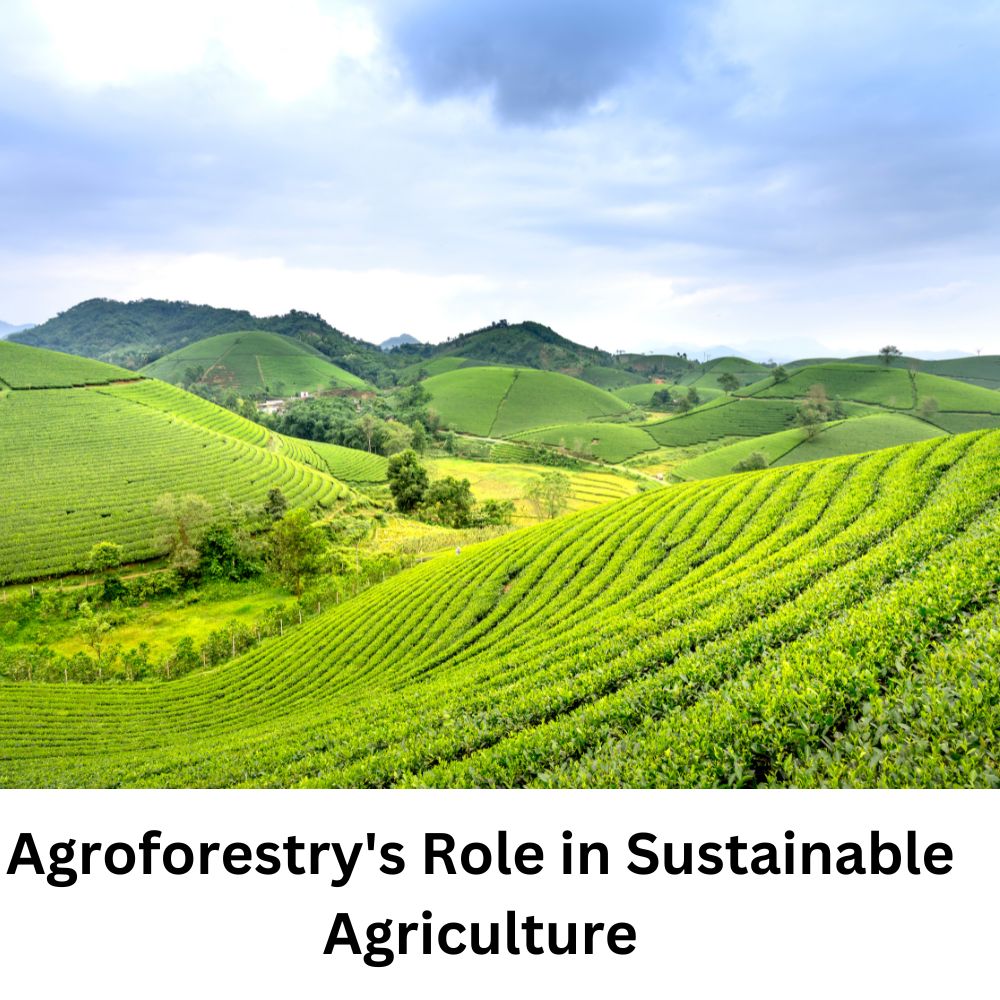Imagine a world where crops and trees flourish in harmony, where fertile soil cradles life both above and below, and where biodiversity dances between rustling leaves and buzzing wings. This isn’t a utopian fiction, but the vibrant reality of agroforestry, an ancient agricultural practice re-emerging as the lifeblood of sustainable food systems. In a world grappling with climate change, dwindling resources, and a growing need for food security, agroforestry stands tall, a Tree of Life offering diverse and lasting benefits.
Rooted in Harmony:
Unlike the monocultures that dominate modern agriculture, agroforestry mimics the intricate tapestries of nature. It integrates trees, crops, and often livestock, into a cohesive system where each element supports and strengthens the others. Trees act as nutrient pumps, drawing minerals from deep within the soil and sharing them with crops through fallen leaves and decomposing roots. Their canopy forms a protective umbrella, moderating temperatures, reducing evaporation, and providing vital shade. This fosters a microclimate that nurtures diverse plant life, attracting beneficial insects and pollinators, and creating a haven for birds and other wildlife.
Yielding Abundance:
The benefits of this interwoven dance extend beyond mere aesthetics. Studies show that agroforestry can increase crop yields by as much as 70% compared to monocultures. Trees provide essential nitrogen fixation, reducing reliance on synthetic fertilizers. Their windbreaks protect crops from harsh elements, while their deep roots prevent soil erosion and maintain water tables. This robust ecosystem can withstand droughts and floods better than conventional farms, building resilience in the face of a changing climate.
Branching Out: Diversity and Income:
Agroforestry isn’t just about boosting yields; it’s about diversifying diets and livelihoods. Integrating fruit trees, nut trees, and other multipurpose species into farms offers farmers a wider range of products to sell, generating additional income streams. Trees provide fuelwood, timber, and fodder for livestock, while some species offer medicinal properties or valuable cash crops. This diversity reduces risks associated with relying on a single cash crop and empowers farmers to become self-sufficient guardians of their land.
The Global Canopy: From the Amazon to Your Backyard:
The beauty of agroforestry lies in its adaptability. It thrives in tropical rainforests, arid grasslands, and even urban backyards. In the Amazon, agroforestry practices mimic the natural diversity of the rainforest, helping indigenous communities restore degraded lands and maintain ecological balance. In Africa, alley cropping systems with nitrogen-fixing trees are revitalizing depleted soils and boosting food security for millions. And closer to home, urban farms are incorporating fruit trees and pollinator-friendly plants, creating green oases and fostering connections between communities and their food.
Challenges and Solutions:
Despite its vast potential, agroforestry faces challenges. Lack of awareness, knowledge sharing, and access to resources can hinder its adoption. Policy frameworks often favor conventional agriculture, while market structures may not value the diverse products of agroforestry systems. To overcome these hurdles, a concerted effort is needed. Investment in research, education, and extension services is crucial. Policies should incentivize and support agroforestry practices, while markets need to adapt to value the diverse outputs of these dynamic systems.
The Future is Rooted in Collaboration:
Agroforestry isn’t just a farming technique; it’s a philosophy, a paradigm shift towards a more sustainable future. It’s about restoring balance to our relationship with the land, recognizing the interconnectedness of all living things. By learning from indigenous knowledge, embracing scientific advancements, and fostering collaboration among farmers, researchers, and policymakers, we can weave a green tapestry of agroforestry that nourishes not just our bodies, but also our planet.
So, let us plant the seeds of change, tend to the saplings of knowledge, and watch as the Tree of Life, agroforestry, flourishes, offering its abundant shade and boundless potential to generations to come.
